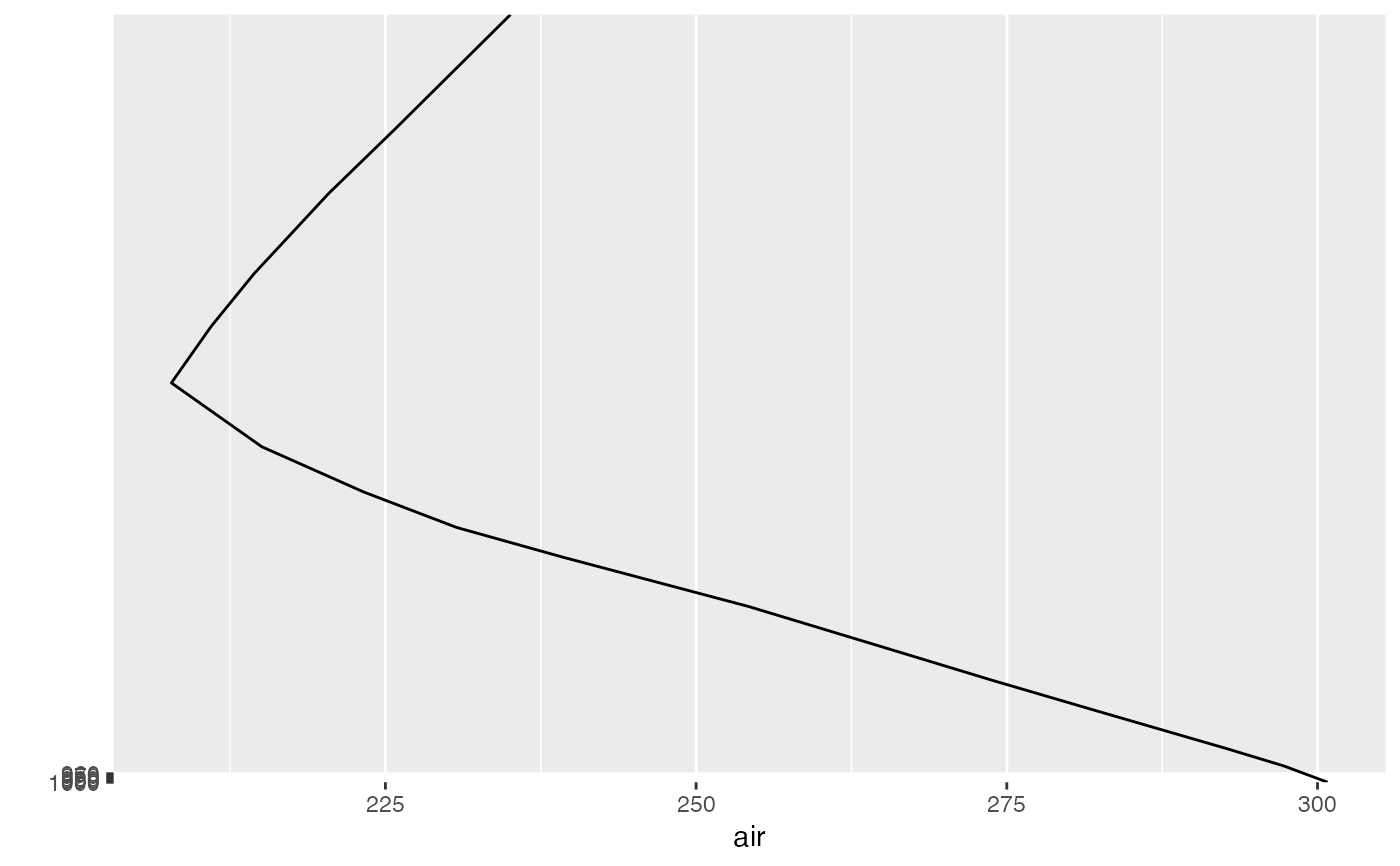Creates a mask
MaskLand(lon, lat, mask = "world", wrap = c(0, 360))Arguments
- lon
a vector of longitudes in degrees in 0-360 format
- lat
a vector of latitudes in degrees
- mask
the name of the dataset (that will be load with
map) for creating the mask- wrap
the longitude range to be used for a global mask
Value
A logical vector of the same length as lat and lon where TRUE means
that the point is inside one of the polygons making up the map. For a global
map (the default), this means that the point is over land.
Examples
# Make a sea-land mask
mask <- temperature[lev == 1000, .(lon = lon, lat = lat, land = MaskLand(lon, lat))]
temperature <- temperature[mask, on = c("lon", "lat")]
# Take the temperature difference between land and ocean
diftemp <- temperature[,
.(tempdif = mean(air[land == TRUE]) - mean(air[land == FALSE])),
by = .(lat, lev)]
library(ggplot2)
ggplot(diftemp, aes(lat, lev)) +
geom_contour(aes(z = tempdif, color = ..level..)) +
scale_y_level() +
scale_x_latitude() +
scale_color_divergent()
#> Warning: Removed 136 rows containing non-finite values (`stat_contour()`).
 # Mean temperature in the USA
usatemp <- temperature[, usa := MaskLand(lon, lat, mask = "usa")][
, .(air = weighted.mean(air, cos(lat*pi/180))), by = .(usa, lev)][
usa == TRUE]
ggplot(usatemp, aes(lev, air)) +
geom_line() +
scale_x_level() +
coord_flip()
# Mean temperature in the USA
usatemp <- temperature[, usa := MaskLand(lon, lat, mask = "usa")][
, .(air = weighted.mean(air, cos(lat*pi/180))), by = .(usa, lev)][
usa == TRUE]
ggplot(usatemp, aes(lev, air)) +
geom_line() +
scale_x_level() +
coord_flip()
